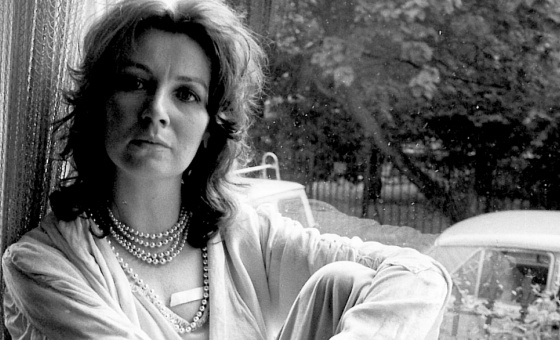This is the last article you can read this month
You can read more article this month
You can read more articles this month
Sorry your limit is up for this month
Reset on:
Please help support the Morning Star by subscribing here
BORN in Harlem, New York, on October 17 1915, Arthur Miller was raised in a wealthy Jewish immigrant rag trade household until his family lost almost everything in the Wall Street Crash of 1929.
The family moved from the upmarket Upper East Side in Manhattan to the wrong side of the tracks on the Brooklyn waterfront.
After graduating from the local high school, Miller worked in a few odd jobs around the docks. It was here in the Red Hook area that Miller first came across communists and radicals — most of them dockers and longshoreman trade union activists.
The young Miller started to attend Communist Party cell meetings and met left-wing activists including Pete Panto, a famous communist dockers’ leader murdered by the mafia.
Miller would later talk fondly about those early days and the lifelong friendships and political alliances he made along the Red Hook waterfront.
He took part-time jobs. He worked at a bakery and as a clerk in a car parts warehouse. This allowed him to save enough money to take himself of to the University of Michigan at Ann Arbour, where he enrolled on the journalism course.
At college he wrote articles for the student paper but gradually he became more interested in literature and writing for the theatre. His first play No Villain won him the first of many awards.
Student Miller changed his course to English. After graduating with an English degree and a Hopwood award for student writers, he moved back to New York and to a writing job with the Federal Theatre Project.
The project was part of the New Deal Administration and its left-wing productions and many communist members soon saw it in trouble with the increasingly right-wing government.
Even so it changed the nature of US theatre and gave the likes of Orson Welles, Elia Kazan, Joseph Losey and Miller a start in the world that would make them household showbusiness names.
By 1946 Miller was a leading member of the Communist Party’s writers unit and producing articles and reviews for the Marxist magazine New Masses.
In 1948 he left Brooklyn and settled in a small studio that he built for himself in Roxbury in rural Connecticut. He wrote the first act of Death of Salesman there in less than a day.
The play opened on February 1949 and won him the Pulitzer Prize, the New York Drama Critics’ Circle Award and a Tony.
His leftist views and the outspoken opinions in his plays soon had Miller in serious trouble with the House of Un-American Activities Committee (HUAC). They called him in to appear before the committee.
Miller refused to comply with the committee’s demands to name fellow Communist Party members or to answer questions on his own party membership or political position.
Miller’s great friend, comrade and artistic collaborator Elia Kazan, named eight members of the Group Theatre, including Clifford Odets, Paula Strasberg and Lillian Hellman, as fellow members of the Communist Party.
After a heated conversation with Kazan about his betrayal, Miller travelled to Salem, Massachusetts, scene of the witch trials of 1692. The conversation and the visit resulted in The Crucible, Miller’s most frequently produced work.
On the face of it the play was a dramatisation of the Salem witch trials. In fact it was an allegory and a hard-hitting criticism of McCarthyism and the HUAC itself.
Despite his marriage to Mary Slattery, Miller had been having an affair with Marilyn Monroe since 1952. In early 1955 Monroe came to New York to join the Actors Studio. She and Miller started a more serious relationship that would lead to his divorce from his first wife and his marriage to Monroe.
Monroe was desperate to become a serious actress and a serious thinker. Along with Miller she read Tolstoy, Dostoevsky and Chekhov as well as other Russian plays and novels.
Miller introduced her to Marx and other political works. She loved to discuss politics and culture with Miller and his circle of left-wing friends.
A key player in that circle was Lee Strasberg, head of the Actors Studio, who became Monroe’s drama coach. Strasberg, from a communist family, had been a founder member of the staunchly left-wing Group Theatre in the 1930s. They had based their methods on Constantin Stanislavsky and the Moscow Arts Theatre.
Their working-class plays like Awake and Sing, Waiting for Lefty and Paradise Lost changed US Theatre forever. This left-wing and communist milieu was Miller’s life and to Monroe it felt like coming home.
In 1956 Miller left his first wife to marry Monroe. They wed at the end of June. As they had hoped, the wedding did much to distract the media and public opinion from Miller’s appearance before the HUAC.
The couple departed for London soon after the wedding so that Monroe could start production on The Prince and the Showgirl with Lawrence Olivier at Pinewood Studios.
In July 1960 Monroe and Miller started filming The Misfits. He had adapted his own short story for the film in which she would star. In fact it all went horribly wrong. On location the couple lived in separate quarters and were barely speaking.
On set they were at war. They divorced in January 1961.
In 1962 Miller married photographer Inge Morath.
Miller’s career as a writer went on to span over seven decades. When he died in 2005 he was widely acclaimed as one of the greatest dramatists of the 20th century.









